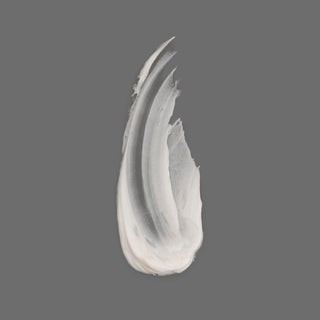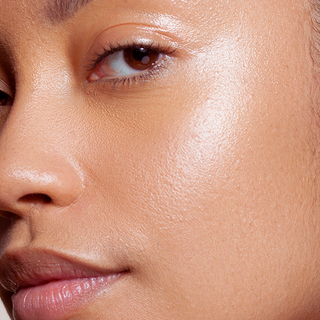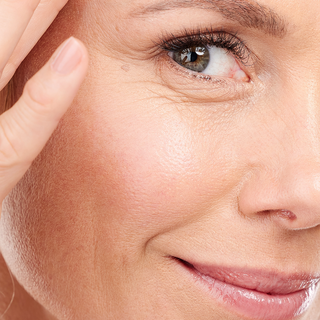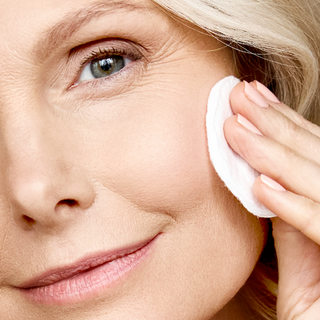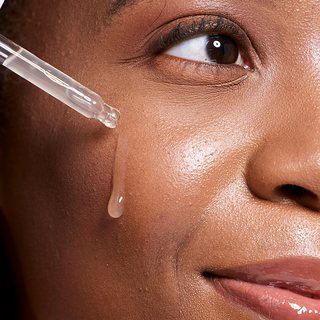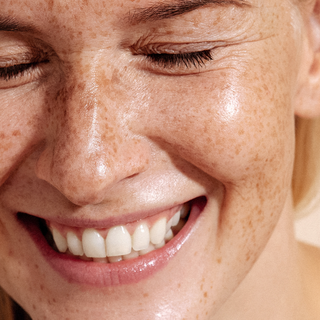Cetearyl alcohol is a skin-softening fatty alcohol made from plant-based sources like coconut or palm oil. Unlike drying alcohols, it hydrates, stabilizes, and enhances texture in skincare. It’s safe, non-irritating for most, and widely used in moisturizers, cleansers, and sensitive-skin formulas.
The Truth About Cetearyl Alcohol: Why It’s In Almost Every Skincare Product
It’s no surprise that “alcohol” in skincare has become a red flag for dryness, irritation, and barrier damage. But here’s where the education comes in (you know I love this part): not all alcohols are created equal.
Some are harsh and astringent, yes. But fatty alcohols like cetearyl alcohol?
They’re completely different, structurally, functionally, and energetically. They’re actually skin-friendly ingredients that help products feel better, absorb smoother, and hydrate deeper.
Let’s clear up the confusion once and for all.
Cetearyl Vs. Cetyl Alcohol: What’s The Difference?
Here’s where people get tripped up. Both cetyl alcohol and cetearyl alcohol sound similar and fall under the same "fatty alcohol" category.
But cetearyl is actually a blend of cetyl and stearyl alcohol, giving it a broader range of benefits in skincare formulation.
So no, this isn’t the alcohol you need to avoid. In fact, when used correctly, it can be one of the most useful, versatile, and well-tolerated ingredients in your skincare lineup.
And yes, some of our most-loved Maria Kane products contain it for a reason. (More on that soon!)
Why Skincare Brands Love Cetearyl Alcohol
If you’ve ever wondered why cetearyl alcohol shows up in everything from luxury moisturizers to drugstore cleansers, the answer is simple: it works. Let’s take a closer look at why so many brands (including mine!) rely on it.
What Does Cetearyl Alcohol Do In Skincare Products?
Here’s the truth from behind the treatment room: cetearyl alcohol is one of those quiet workhorse ingredients that does a lot of heavy lifting in your skincare products, without demanding any spotlight.
Let me break it down:
-
It’s an emollient. This means it helps soften and smooth the skin by forming a lightweight, breathable barrier that locks in hydration.
-
It acts as a thickener and emulsifier. It stabilizes oil-and-water mixtures so your product doesn’t separate, while also making the formula feel rich, balanced, and easy to spread.
-
It helps other ingredients absorb more effectively. It enhances the overall performance of a formula by creating an ideal surface environment, helping active ingredients penetrate more evenly without disrupting the skin's natural barrier.
In well-formulated products (like how we develop ours!), this means better results without increasing irritation or adding unnecessary complexity.
Common Skincare Products That Use It
Cetearyl alcohol shows up in a wide range of skincare and personal care products, not just because it feels good, but because it helps products perform better:
-
Moisturizers (especially barrier creams and night treatments)
-
Sunscreens (where it improves spreadability and texture)
-
Facial cleansers and body washes
-
Conditioners and hair masks
-
Shaving creams and post-shave balms
It’s even a staple in many baby lotions and sensitive-skin formulas, which should speak volumes about its safety and gentleness when used correctly.
Cetearyl alcohol earns its spot when it improves product function and protects skin integrity, particularly in formulas designed for hydration, recovery, or barrier support. So while the word “alcohol” might cause pause, this one deserves your trust.
What Science Says About Its Skin-Friendly Properties
One of the biggest misconceptions I come across in the skincare space, both online and in my treatment room, is that all alcohols are harsh, drying, or disruptive to the skin barrier.
But let’s set the record straight: cetearyl alcohol doesn’t belong in that category.
Clinical studies show that cetearyl alcohol is non-drying and non-irritating for most people. It’s a fatty alcohol, which means it behaves more like a moisturizer than an astringent.
Structurally, it helps form a soft, breathable layer on the skin that locks in hydration and supports barrier function, rather than stripping it away.
It’s also classified as non-mutagenic (i.e., not damaging to your DNA) and appears on the FDA's approved list of cosmetic and food-safe ingredients. It’s permitted in formulas that are labeled “alcohol-free”, a big clue that this ingredient plays by different rules than the alcohols that cause irritation or dryness.
In terms of performance, cetearyl alcohol works as both a conditioner and protector. It’s especially effective on rough, flaky, or inflamed skin, where it helps restore comfort and softness by sealing in moisture without feeling greasy.
Why It’s Safe For Most Skin Types
Everyone’s skin is different, but when used appropriately, cetearyl alcohol tends to play nice with nearly every skin type.
Dry Skin
This is where cetearyl alcohol shines! It’s an occlusive, which means it slows down moisture evaporation from the surface of your skin (known as transepidermal water loss). This makes it a staple in barrier-repair formulas.
Our Recommendation: Absolutely consider it!.
When formulated thoughtfully (like in our Barrier Replenishing Cream), cetearyl alcohol helps hydrate, calm, and fortify the skin barrier without triggering irritation.
Sensitive Skin
Fatty alcohols are significantly gentler than preservatives, fragrances, or essential oils, all of which are common culprits for sensitivity flare-ups. That’s why you’ll often find cetearyl alcohol in calming or post-procedure products, including those for rosacea or reactive skin types.
Our Recommendation: Definitely check it out, starting with our Barrier Replenishing Cream!
Oily Or Acne-Prone Skin
Contrary to common fears, cetearyl alcohol is non-comedogenic for most people. It won’t clog pores on its own. However, I’ve seen cases where people with already compromised skin barriers or active acne experience congestion when cetearyl alcohol is combined with other occlusives or heavy textures.
Our Recommendation: You may still benefit, but start slow. Stick to clean, minimalist formulations and avoid combining with too many other rich emollients.
Look for signs of pore congestion, and don't skip the patch test!
Fungal Acne-Prone Skin
This is the only group where caution is warranted. While cetearyl alcohol doesn’t directly feed the Malassezia yeast that causes fungal acne, its lipid structure can create a moisture-rich environment that some individuals react to.
If you’ve had reactions to fatty acids or esters in the past, you’ll want to research products carefully, or choose options designed specifically for fungal-acne-safe routines.
Our Recommendation: It’s a gray area. Some can tolerate it, others can’t.
If this is you, I recommend choosing formulas specifically vetted for fungal acne compatibility or consulting with a skin specialist before introducing anything new.
Ingredient-Sensitive Skin
If your skin shows signs of irritation, such as stinging, burning, and itching within minutes of applying a new product, your skin might be sensitive to specific ingredients. But lucky you: you’re exactly who we formulate for!
Our Recommendation: Seek out short, transparent ingredient lists where every element has a purpose, and avoid brands that hide behind marketing terms like “sensitive” while overloading on fillers.
Is Cetearyl Alcohol Bad For Your Skin? Let’s Address The Concerns
Even though science supports cetearyl alcohol as a gentle, hydrating ingredient, I understand why some of you still feel unsure.
So let’s walk through the biggest concerns I hear from clients and clarify what’s really going on beneath the surface.
Does It Cause Acne Breakouts?
This is one of the most frequently asked questions in my treatment room, and for good reason.
I’ve worked with clients who’ve seen new breakouts pop up after switching to a “hydrating” or “barrier-repair” cream, only to find cetearyl alcohol high on the ingredient list.
Here’s what you have to focus on: cetearyl alcohol is considered non-comedogenic, meaning it doesn’t clog pores in most skin types. But that doesn’t mean it’s universally safe.
Some users, particularly those prone to closed comedones or fungal acne (Malassezia folliculitis), report flare-ups after using products containing fatty alcohols like this one.
The real issue?
These reactions are often caused by a combination of ingredients, not just cetearyl alcohol alone. When it’s buried in a product with heavy butters, silicones, or occlusive oils, the skin can feel overwhelmed, especially if the barrier is already compromised.
If you’re acne-prone, my advice is simple: patch test first. Start with a small amount behind the ear or on the jawline for a few days. It’s a small step that can save you a lot of trial and error.
Can It Dry Out Or Irritate Skin?
Cetearyl alcohol is a fatty alcohol, and its molecular structure is completely different from drying alcohols like ethanol or SD alcohol.
Rather than evaporating and pulling moisture from your skin, cetearyl alcohol helps seal it in. It’s often included because it improves hydration and softness.
So why do some people still report a burning sensation or irritation?
It’s usually not the cetearyl alcohol, it’s what it’s paired with. Harsh preservatives, oil extracts, acidic components, or even high concentrations of active ingredients can all cause irritation, especially if your skin barrier is already inflamed.
Bottom line: If you’re feeling a sting, it’s worth reviewing the entire formula, not just one ingredient.
Is It Safe for Eczema or Rosacea?
This is where cetearyl alcohol can really shine. For clients with eczema or rosacea, I often recommend formulations that include fatty alcohols like this one, because they help support the skin barrier, reduce moisture loss, and soothe dry, inflamed patches.
In fact, cetearyl alcohol is commonly found in medical-grade creams and ointments used in dermatology settings for exactly that reason.
However, rare cases of allergic contact dermatitis do exist.
It’s not common, but if you notice a rash or eczema-like flare after using a new product, stop immediately and consult your dermatologist. A patch test or allergy panel may help pinpoint the true cause.
If you have a chronic skin condition, I always suggest pairing cetearyl alcohol with barrier-replenishing ingredients like ceramides, hyaluronic acid, and squalane. (Psst, our Barrier Replenishing Cream was designed with exactly that combo!)
Should You Be Worried If It’s In Your Products?
Let me put it this way: cetearyl alcohol is one of the safest ingredients you’ll find on a skincare label, especially when it’s used for the right reasons and paired with supportive actives.
But skincare isn’t one-size-fits-all.
If you’ve reacted before, or if you know your skin doesn’t tolerate fatty alcohols well, trust that instinct. Always read ingredient lists, patch test new formulas, and don’t be afraid to ask questions.
For those prone to fungal acne or highly reactive skin, it’s smart to double-check your formulations.
Here are quick points to help you decide:
-
If your skin barrier is compromised
→ ✅ Try it. Cetearyl alcohol can help lock in hydration and support healing, especially when combined with ingredients like ceramides and squalane. -
If you’re breakout-prone
→ ⚠️ Patch test first. While it’s non-comedogenic for most, layering too many occlusives can overwhelm acne-prone skin. Start slow and monitor. -
If it causes burning or stinging
→ 🚫 Discontinue use and check the full formula. The issue may not be cetearyl alcohol, but rather what it’s paired with. Look for other potential irritants like acids, fragrances, or preservatives.
When Cetearyl Alcohol Works Well (And When It Doesn’t)
Like most ingredients in skincare, cetearyl alcohol works beautifully when it’s used with intention, and can backfire when it’s not.
I’ve seen both ends of the spectrum in my practice, which is why taking the time to learn about what you put on your skin really pays off in the long run. Don’t just slather fake-labeled skincare products on your face and call it a day.
Now, let’s talk about where this ingredient thrives and where it might need a second look.
Best Product Types To Pair With Cetearyl Alcohol
Cetearyl alcohol shines brightest in formulas designed to nourish, support, and restore the skin barrier. Its emollient and stabilizing properties make it a perfect fit for:
-
Barrier creams
-
Rich moisturizers
-
Night creams
-
Cleansing balms
In these products, cetearyl alcohol helps lock in hydration, improve texture, and create a comforting feel, without compromising absorption.
It’s particularly effective when paired with humectants like hyaluronic acid and niacinamide, which draw moisture into the skin while cetearyl alcohol helps seal it in.
Maria Kane leverages this synergy in formulas designed to strengthen rather than overwhelm. Our approach ensures cetearyl alcohol supports barrier function without creating excess weight or buildup.
Product Types To Be Cautious With
Even gentle ingredients can cause issues when misused, and cetearyl alcohol is no exception. Here are a few scenarios where you might want to pause before layering it in:
-
Overlapping active-heavy serums or exfoliants: When combined with strong AHAs, BHAs, or retinoids, the emollient nature of cetearyl alcohol can make a product feel too occlusive, especially if the skin barrier is already compromised.
-
Occlusive-rich products in humid climates: If you’re layering cetearyl alcohol on top of heavy butters or thick occlusives in hot, damp environments, your skin might feel congested or sticky. Lightweight layering is key.
-
Products labeled “acne-safe” that still include fatty alcohols: Just because a product claims to be non-comedogenic doesn’t mean it works for everyone. If you’re prone to fungal acne, fatty alcohols like cetearyl may create a moisture-rich environment that encourages flare-ups.
My best advice? Always look at the full formula, and listen to your skin.
If something that’s supposed to be calming is making you break out or feel inflamed, don’t assume the problem is your skin.
It might be the product.
Maria Kane Products That Feature Cetearyl Alcohol (And Why They Work)
My formulation philosophy on my whole product line is quite simple: every ingredient must earn its place.
That means no fillers, no fluff, and definitely no trendy additions just for the sake of marketing.
When we use cetearyl alcohol in a product, it’s because it plays a functional, skin-benefiting role, especially in supporting the barrier, texture, or stability of a formula.
Here are two standout examples where this ingredient truly makes a difference.
Barrier Replenishing Cream
This is one of our most-loved moisturizers, and for good reason. Designed for dry, post-procedure, or highly sensitive skin, the Barrier Replenishing Cream combines the emollient power of cetearyl alcohol with skin-repairing ingredients like:
-
Ceramides (to reinforce the lipid barrier)
-
Squalane (to deeply hydrate without clogging)
-
Antioxidants (to protect and soothe irritation)
In this formula, cetearyl alcohol serves as more than a texturizer, it helps form a breathable seal that locks in moisture and protects fragile skin
Whether you're dealing with seasonal dryness, skin barrier damage, or post-treatment healing, this cream offers intensive support without heaviness or risk of congestion.
Soothing Peptide Cleanser
Sensitive skin doesn’t just need gentler actives, it needs every part of the routine to be soft and non-disruptive, starting with the cleanse.
That’s where our Soothing Peptide Cleanser shines.
Formulated with hydrating peptides, botanical extracts, and a touch of cetearyl alcohol, this cleanser balances the need for cleanliness with the need to preserve your skin’s protective barrier. It removes excess oil and debris while leaving your skin calm, comforted, and never stripped.
This is a great option for:
-
Reactive or rosacea-prone skin
-
Clients recovering from peels or treatments
-
Anyone trying to simplify and soothe their routine
How Maria Kane Prioritizes Ingredient Function Over Filler
We only include cetearyl alcohol in our formulas to serve its real purpose: whether that’s stabilizing a sensitive formula, improving glide and spread, or helping deliver other actives more effectively.
We also steer clear of:
-
Parabens
-
Synthetic fragrance
-
Drying alcohols like ethanol or isopropyl alcohol
This clean, clinical approach makes our products especially suitable for those who find themselves asking, “Why does my ‘sensitive skin’ product still cause a reaction?”
We hear you, and we build our line to give you honest, effective skincare that speaks to real-world skin needs.
Because in our world, results come from intention, not hype.
Should You Avoid or Embrace Cetearyl Alcohol in Skincare?
Skincare doesn’t need to be complicated, but it does need to be intentional. Cetearyl alcohol is a perfect example of an ingredient that’s often misunderstood simply because of its name.
The truth? It’s a skin-conditioning powerhouse that softens, stabilizes, and hydrates, when used in the right context.
As a clinician and formulator, I can confidently say: cetearyl alcohol is not the enemy. It’s safe for most, loved by many, and a staple to the performance of countless products (including our Barrier Replenishing Cream and Soothing Peptide Cleanser!)
That said, skincare should always be personal. So before you swear by or swear off any ingredient, I recommend you tune in to what your skin is telling you.
So should you embrace cetearyl alcohol?If it works for your skin, absolutely! Just like every ingredient we use, it’s not about hype, it’s about how it performs in real life.

